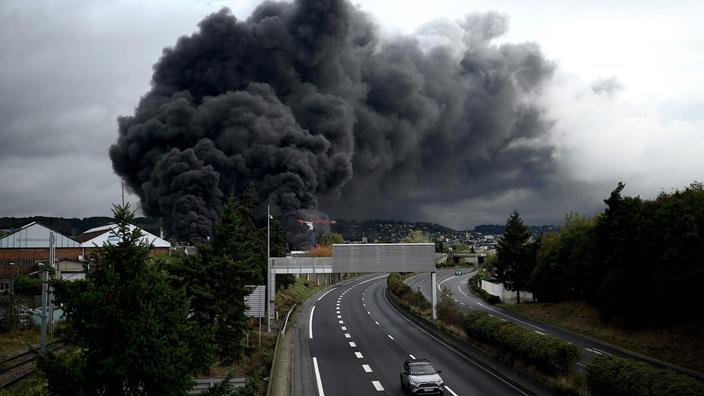Two years after the spectacular Lubrizol fire in Rouen, the fear of significant long-term health effects remains, relaunched by a study reporting impressive peaks in oil pollution in 2019 up to 40 km from the Seveso site.
"
It revives the little music that we have in mind
" since the disaster of September 26, 2019 which saw 10,000 tons of chemicals burn: "
in a few years, we will be sicker than we should have been
", estimates Thomas Hermand, mayor of Serqueux, a village of a thousand inhabitants located 40 km from Rouen, interviewed by AFP.
To discover
Covid-19: the third vaccine dose, instructions for use
Read also Lubrizol: the fire had an impact on the psychological health of the exposed population
According to a study published in July, his municipality reached after the 2019 fire double the alert threshold for polycyclic aromatic hydrocarbons (PAHs).
The elected official, who is also a teacher-researcher at the faculty of law, lodged a complaint at the end of July on behalf of his municipality, according to a report from the gendarmes.
His village is far from being the only one concerned.
The study, which covers 23 municipalities in Rouen and the surrounding area, establishes "
fire-related marking on PAHs
".
"No more alert rates are reported"
For this, the Aair Lichens company collected lichen in the fall of 2019, then in the fall of 2020, to look for these carcinogenic products. Result: in 2019 “
all of the locations show (have) significant impact that can reach up to 14 times the significance limit
” and the “
relationship with the incident (...) seems clear
”. One year after the fire, "
the mass of PAHs (sum of all locations) has fallen by half
", up to 83% depending on the location. "
No more alert rates are reported and a large majority of the levels to monitor are no longer,
" according to the report. “
However, the base levels are not yet back,
” emphasizes Aair Lichens.
Read alsoNew Lubrizol decontamination work in Rouen, two years after the fire
For the president of the Association des sinistrés de Lubrizol (ASL) Simon de Carvalho, the study “
confirms the concerns
” about the health consequences of the fire.
The Facebook page of the “
Lubrizol collective
” which the ASL runs has nearly 24,000 members.
"
Why have you waited more than a year and a half to make these studies public
," asked the ASL in a joint statement with the Union of victims of Lubrizol and Respire Rouen.
At Serqueux, the mass of the 16 PAHs sought increased from 3,126 µg / kg in 2019, after the fire, to 670 in 2020. Aair Lichens considers that “
the background noise
” is less than 155, that the value is “
significant
”
"When it is greater than 220,"
to watch
"from 750 and the"
alert threshold
"is exceeded at 1,500.
These thresholds are environmental, however, emphasizes the company.
Its report nonetheless recalls the numerous toxic effects on health of these PAHs.
"
A mother told me that her daughter had health problems since
" the disaster, worries Mr. Hermand whose "
gutters still bear
" according to him "
marks
Soot from the fire.
Read also Lubrizol challenges his indictment because of "procedural irregularities"
A little closer to Rouen, in Bosc-Bordel, the mass of PAHs reached 3,065 in 2019, before dropping to 506 in 2020. In Déville-lès-Rouen, in the agglomeration, the peak was 2,293 in 2019 , in Notre-Dame-de-Bondeville, 10 km from Rouen, from 2.041.
400,000 inhabitants concerned
Questioned by Sébastien Jumel, the Minister of Health Olivier Véran replied in a letter to the PCF deputy on September 2: "
The short-term health assessment is very moderate
". "
Studies are planned (...) to assess the health impact of the event more broadly
", with "
first results (...) from the second quarter of 2022
". But Santé Publique France (SPF) warned in a recent report that in the absence of "
an emergency biomonitoring device in France
", all pollutants cannot be taken into account because some "
have disappeared
". As for those who remain, it will be "
difficult to isolate the contribution of the fire to the impregnation of the local population.
Given "
the industrial past of the area
".
Two hundred and fifteen municipalities in five departments, or about 400,000 inhabitants, are affected by the fallout of soot from the fire in Lubrizol and its neighbor NL Logistics, according to SPF.

